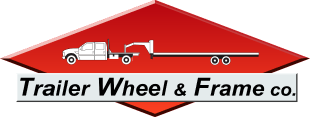Choosing the Right Trailer: Bumper Hitch or Gooseneck Trailer
“The right tool for the right job!” If you need to cut some wood, the best tool is:
- A chainsaw to cut down a tree.
- A circular saw to frame a house.
- A band saw to cut intricate shapes.
- A pocket knife to whittle a stick.
You can use a pocket knife to cut down a tree, but it will take a lot of time and effort.
If you haul large objects, equipment, or cattle, finding the right trailer for the job is just as important. If a trailer purchase is in your future, you should be aware of the two major options—a bumper hitch trailer or a gooseneck trailer. Which option best meets your needs?
Design Differences
Bumper hitch trailers attach to a trailer hitch welded to the frame and located near the rear bumper of a truck or SUV. The hitch is usually welded to the frame at the factory or can be attached after-market. The trailer follows behind the towing vehicle, and the weight of the trailer is borne from behind the rear wheelbase.
Gooseneck trailers attach to a trailer hitch welded to the frame and located on the pickup’s bed. The connection of the trailer is arched to clear the sidewalls and tailgate of the truck bed. The weight of the trailer is borne ahead of the rear wheelbase, near the center of the hauling vehicle. A gooseneck trailer can be longer since a portion of the trailer will extend over the truck bed.
Because of the design, gooseneck trailers can be longer and haul heavier loads than bumper hitch trailers. But that is still not enough information.
Pros of Bumper Hitch Trailers
- Hitch connections are commonly installed on most vehicles capable of hauling a trailer—trucks, SUVs, and crossovers.
- The turn radius for bumper hitch trailers follows the arc of the towing vehicle, a feature that makes it easier for beginners to pick up.
- Hitches are often detachable, and the same connection will host a variety of ball sizes. The same towing vehicle can haul both small and large vehicles.
- Bumper hitch trailers generally cost less than most goosenecks, making them affordable for more people and businesses with limited budgets.
Cons of Bumper Hitch Trailers
- The weight capacity of bumper hitch trailers is limited by the design; heavy payloads may exceed the capacity of this hitch.
- That natural turn radius? It is also wider. Backing a bumper-mounted trailer can be difficult to master.
- The connection point of the trailer puts the weight behind the vehicle and makes the trailer more prone to swaying. The payload must be put as far forward as possible to reduce this risk. High winds and high speeds increase the likelihood of swaying while the vehicle is in motion.
- Hooking these trailers up is difficult since the ball on the vehicle, and the hitch on the trailer are not visible to the driver. Connecting these hitches often requires two people or several attempts.
Pros of Gooseneck Trailers
- Gooseneck trailers can carry a higher payload since the weight is carried forward, making the trailer more stable. For this reason, they are less susceptible to swaying.
- The pivot point for a gooseneck is further forward, so the turn radius is shorter. This means making sharper turns and fitting into tighter spaces is easier.
- The ball and hitch of a gooseneck are both visible from the driver’s seat, making connecting a gooseneck trailer much easier.
Cons of Gooseneck Trailers
- Gooseneck trailers can only be used with pickup trucks since the ball and hitch are both visible from the driver’s seat.
- Goosenecks are generally longer than bumper hitch trailers and need more space for storage. While this makes them ideal for commercial applications, make sure there is adequate storage space.
- The shorter turn radius makes maneuvering easier . . . once you get the hang of turning and backing. Expect there to be a learning curve to move a gooseneck efficiently.
- Since gooseneck trailers are larger and have an extended hitch, they tend to cost more than bumper hitch trailers.
Which is better? A bumper hitch or gooseneck trailer? That depends on your need and application, including the weight of your typical load, how often you use it, your patience while learning, and your budget.
Ready to Gooseneck Trailer Shop?
Still on the hunt for your perfect Gooseneck Trailer? Trailer Wheel and Frame has one of the largest utility trailer inventories in the industry.

